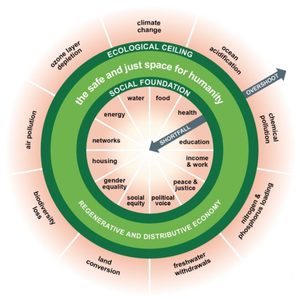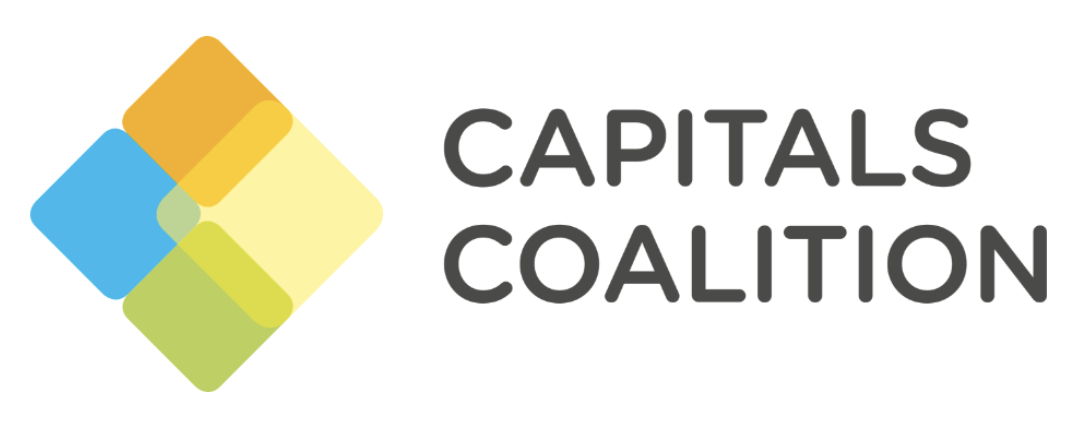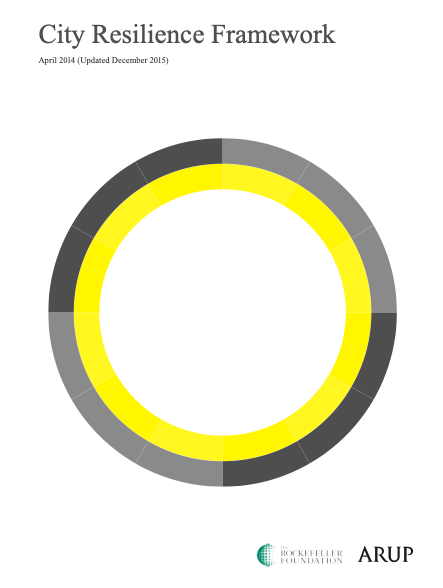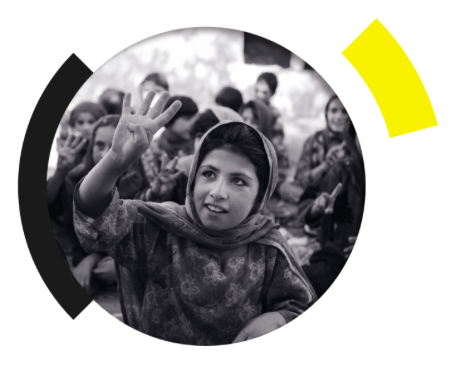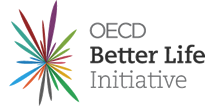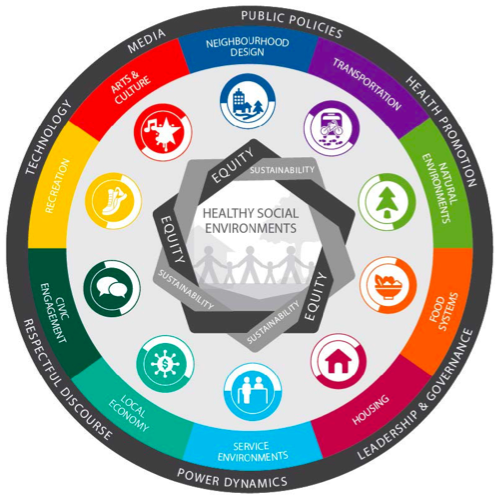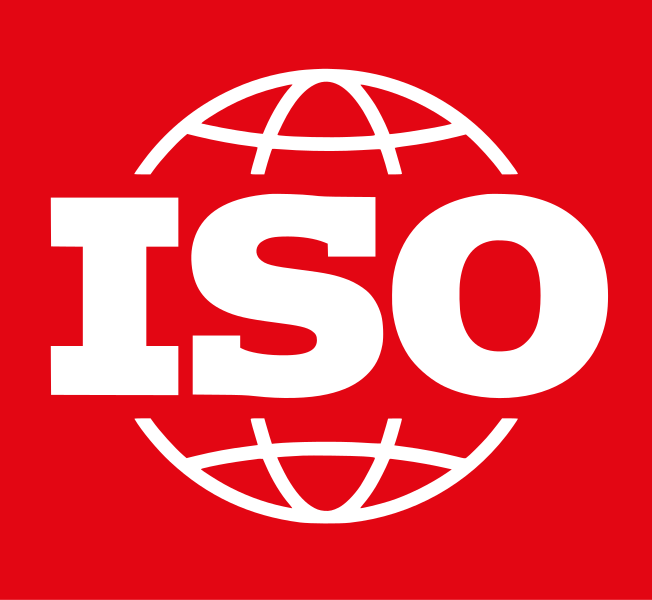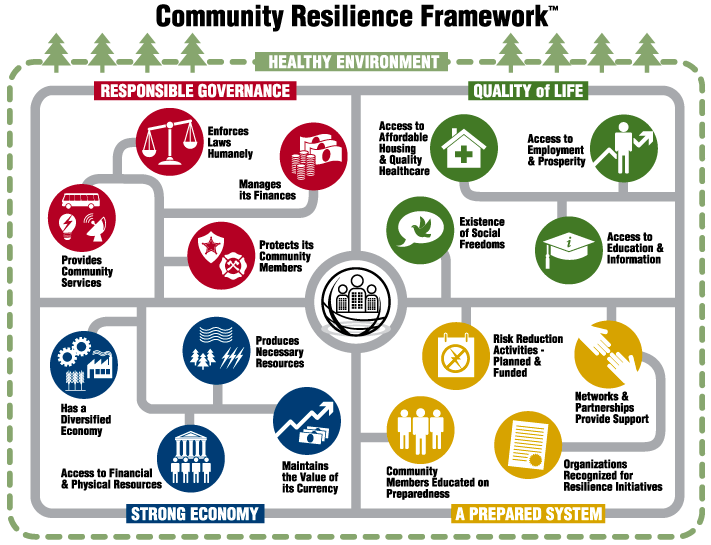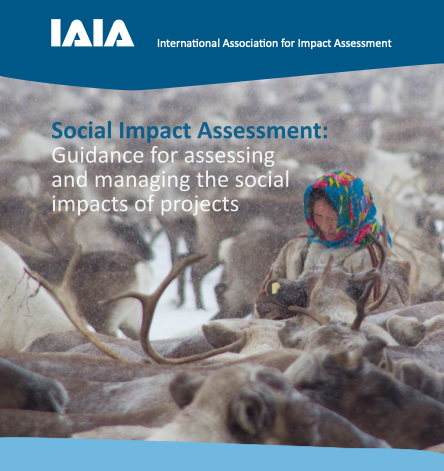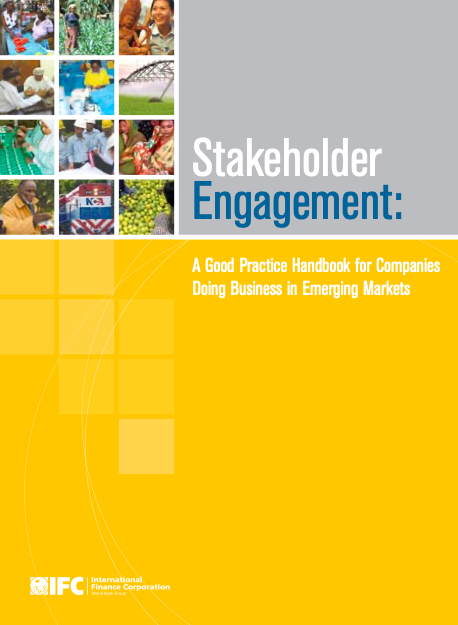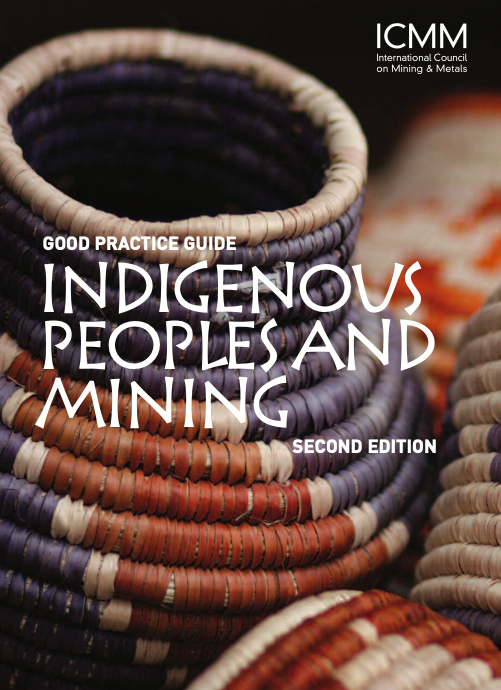Company-Community Relations
Description
Includes stakeholder engagement and rightsholder engagement; consultation; public participation; effective grievance/feedback mechanisms; local community updates and disclosure; support for local community development plans and community aspirations; and respect for the rights of Indigenous Peoples, including sovereignty, right to self-determination, and Free, Prior and Informed Consent (FPIC).
Share this Subissue on:LinkedIn
Resources
Community Resilience
The right to a clean, healthy, and sustainable environment
In August 2022, the United Nations General Assembly passed a resolution recognising the right to a clean, healthy, and sustainable environment as a human right. States, international organisations, businesses, and other stakeholders have a responsibility to “scale up efforts” to ensure a clean, healthy, and sustainable environment for all.
Understanding Community Resilience
The success of a company is directly linked to the resilience of the communities where it operates, as well as the resilience of the communities of its workers, its suppliers, and its customers. Increasingly, communities around the world are starting to contemplate their resilience and long-term sustainability. As a result, companies are expected to account for their impacts on community resilience. This guide will help you to understand why community resilience matters, how communities are beginning to approach resilience, and how your company can explore its role in fostering community resilience.
Partnering for Community Resilience: South African Case Studies
Proactive companies are recognising the strategic relevance of community resilience to their short- and long-term success. Community resilience is a positive dynamic between social, economic, and ecological systems that ensures community wellbeing and effective responses to shocks and disruptions, such as fires, droughts, or economic crises. This guide shares five in-depth case studies of companies engaging in partnerships for community resilience in South Africa. We distil the key lessons from these case studies for corporate managers who are planning or implementing partnerships for community resilience.
The Social Foundation: 'A Safe and Just Place for Humanity'
Kate Raworth's “Doughnut” model is a key framework for understanding sustainability context. Building on the planetary boundaries framework as a 'ceiling', it adds social foundations as a 'floor' and underlines the need to operate in the space between. The social foundation is made up of 11 boundaries that draw attention to communities needing access to basic resources to fulfill their human needs. This access needs to be achieved in a way that does not place undue stress on the earth's resources. The framework is based on the premise that we should be striving to build and maintain social foundations while staying within planetary boundaries.
Community Resilience: Why It Matters to Companies and 3 Things Your Company Can Do
The increasing pressure on companies to account for their impacts on the environment and on communities has been hard to miss. And many companies are making an effort to “do good” in the community, but they are often unsure how best to go about it. This blog post helps companies to figure out how they can contribute.
Social & Human Capital Protocol
Developed by WBCSD and launched by the Capitals Coalition, the Social & Human Capital Protocol is an excellent starting point for recognising and leveraging people and relationships as drivers for sustainable growth. Divided into four steps (Frame, Scope, Measure & Value, and Apply), the Protocol aims to clarify best practices, boost the positive impacts of business, and improve business credibility by integrating the consideration of social impacts and dependencies into performance management and decision-making. The Social & Human Capital Coalition has also developed case studies, sector guides, and a toolkit to complement the Protocol.
Applying resilience thinking
Based on the book "Principles for Building Resilience: Sustaining Ecosystem Services in Social-Ecological Systems," this short article introduces seven principles that can help you to better understand and practically apply resilience thinking within your organisation's decision-making.
City Resilience Framework
This report from Arup International Development and the Rockefeller Foundation introduces a framework for articulating city resilience, and was used to create the City Resilience Index. This report was informed by literature, case studies, and fieldwork, and it introduces a range of dimensions, indicators, and goals that will help you to understand the qualities of city resilience and recognise the types of actions that will advance city resilience.
City Resilience Index
Developed by Arup and supported by The Rockefeller Foundation, this tool helps users to understand the challenges of assessed cities in a systematic way. The tool allows you to carry out a resilience assessment of your city and generate a resilience profile; view and understand ready-made resilience profiles for various cities around the world; and explore solutions that are currently advancing the resilience of cities. This tool will help you to determine the baseline resilience of cities related to your present and future operations, value chain, and strategy, and will help you to measure progress.
OECD Better Life Initiative: Measuring well-being and progress
The OECD Better Life Initiative can help you to build a more comprehensive and nuanced understanding of how peoples lives are improving or degrading in regions around the world, as well as the types of policies and actions that can help to improve the lives of people in communities. At a glance, the Better Life Initiative has created excellent resources - such as their How's Life? report, Better Life Index, and comprehensive surveys - centered around the key themes of reporting, communicating, understanding, developing, building, and adapting. These resources can provide insights into quality-of-life factors that impact wellness; material conditions that are shaping people's economic options; and compare statistics between OECD and partner countries.
Healthy Social Environments Framework
This is an excellent framework for building your understanding of the social environment, which is the underlying social, cultural, and economic context within which communities live, work, and play. It introduces a matrix of core social environment features, core values, tools & facilitators, and outcome categories to highlight the inextricable and mutually-reinforcing connections within social environments. This user-friendly tool can help you with informing, influencing, and making community planning decisions, and can be used to initiate and organise conversations about social connections in communities, as well as to frame and organise presentations, discussions, and proposals on the subject.
Sustainable cities and communities - Indicators for city services and quality of life
ISO 37120 provides definitions and methodologies for a set of sustainable city indicators, and will help you to determine baselines for how cities may steer and deliver services and improve quality of life. If you are looking to contribute to city service performance and to improve the livability of the spaces in which your business operates, this standard is a good place to begin. The standard addresses a range of factor that maintain and advance the resilience of cities, including economics, education, health, recreation, shelter, transportation, and . For each of these factors it provides data and calculations that can be used to measure performance, allow for comparisons between cities, and to communicate best practices.
Sustainable cities and communities - Indicators for resilient cities
ISO 37123 provides definitions and methodologies for a set of sustainable city indicators, and will help you to determine baselines for how cities may prepare for, recover from, and adapt to shocks and stresses. If you are looking to contribute to the resilience of the spaces in which your business operates, this standard is a good place to begin. The standard addresses a range of factor that maintain and advance the resilience of cities, including education, health, safety, energy capacity, climate change adaptation, and infrastructure finance. For each of these factors it provides data and calculations that can be used to forecast emergency preparedness.
Tackling inequality: An agenda for business action
This flagship report from WBCSD can help you understand why growing inequality is a systemic risk to business and how businesses can address it. Structured into three parts, the report lays out why action on inequality is needed and why it is in the interest of businesses to take action. The second part outlines ten actions businesses can take; for each action, the report explains what the action entails, outlines the business case, and provides many real-world examples. The third part provides a transformation framework to help your business get started in applying the actions covered within your business context. This wide-ranging and detailed report contains insights that will be widely applicable across your organisation, including sustainability, supply chain, HR, finance, and legal departments.
ICOR: Community Resilience Frameworks
The ICOR Resilient Community Framework encourages taking a "systems" view to community resilience, with each system contributing to a greater whole. It asserts that there are five primary systems upon which each community functions, with each contributing to the overall resilience or vulnerability of the community: 1) a healthy environment, 2) a responsible government, 3) a strong economy, 4) preparedness for risks and disasters, and 5) quality of life. This is a good resource for helping you to understand the intersections and feedback loops between these facets of resilient communities.
Social Impact Assessment: Guidance for assessing and managing the impacts of projects
This guide from the International Association for Impact Assessment can help you to understand what is expected in good practice social impact assessment and social impact management processes, especially in relation to project development. It defines and explains social impacts, explores the business case and key considerations, and identifies the phases and tasks of social impact assessments.
Social Impact across the Built Environment: Prioritising people throughout the building life cycle
This report from the World Green Building Council and others can help you better understand the full range of social impacts related to the life cycle of buildings. Mirroring the concept of Scope 1, 2, and 3 emissions used to measure greenhouse gases, this report defines four scopes for the built environment that can be used to identify and assess social impacts. Scope 0 covers your internal practices, Scope 1 covers a building’s users, Scope 2 covers the surrounding community, and Scope 3 covers the construction supply chain. It also highlights a 5-step process for addressing issues identified in the Scopes, as well as case studies and a list of relevant resources. The scoping framework presented will be most useful to capital projects, real estate, and facilities teams, or anyone involved in developing or managing buildings.
The Future of the Care Economy
This white paper from the Global Future Council can help you to better understand the care economy, its importance to societal and economic resilience, and the case for making strategic investments that advance it. The paper explains the concept of the care economy and the ways in which care is critical to addressing longstanding inequities; provides a snapshot of the current state of the care economy; proposes a framework for enhancing care systems; and highlights practices and key success factors that can reshape structures of care.
The Social Justice Guide for Business: Moving Beyond Crisis to Action
This guide from BSR’s Center for Business & Social Justice can help you understand why addressing social issues is a business imperative. The first section identifies six overarching forms of corporate engagement on social issues and makes the argument that current engagement is mostly voluntary and limited to win-wins. The second section explains an alternate approach to corporate social justice, how it is different from business as usual, and how it can be integrated into your business strategy. The third section presents a tool outlining common barriers companies face to advancing social justice, along with tactics to overcome them. This guide will be most useful to business leaders, sustainability practitioners, or anyone involved in addressing social issues.
Multistakeholder approaches to socio-economic transitions in mining
This comprehensive handbook from the International Council on Metals and Mining presents nine multi-stakeholder approaches that mining companies and external stakeholders can apply to support socio-economic transitions (especially to a post-mining economy) and build community resilience. The handbook explores the core factors that influence the success of socio-economic transitions; the value of multi-stakeholder approaches, the roles mining companies can play, and what makes these approaches effective; nine distinct types of multi-stakeholder approaches, including post-mining joint ventures, collaborative regional planning processes, regeneration/development coalitions, and monitoring committees; illustrative cast studies; and eleven practical tools to support the application of these approaches in real-world settings.
Other Resources
Grievance Mechanism Toolkit
This toolkit by the Compliance Advisory Ombudsman (CAO) can help you implement operational-level grievance mechanisms in different sectors. It aims to provide practical guidance on how companies with limited time and budgets can enable community members to raise concerns. The toolkit clearly outlines the business case for implementing grievance mechanisms; explains the purpose of grievance mechanisms and how to design and implement them effectively in your local context; and features a repository of best practice tools and techniques. This toolkit will be most useful to compliance, operations, and supply chain management teams.
Community grievance mechanisms in the oil and gas industry
This comprehensive manual was created by Ipieca to provide step-by-step guidance for the design and implementation of operational-level grievance mechanisms, as well as the design and management of corporate-level frameworks for resolving community grievances. The manual draws upon the practical experiences of seven pilot projects created by Ipieca member companies, as well as shared learning from Ipieca members and stakeholders, and will be of particular benefit to operations managers, project managers, policy-makers, and other leaders responsible for managing relations with community partners.
Although this manual was created by and for the oil and gas industry, the manual includes an expansive array of instructions and helpful grievance mechanism tools that can be applied to a broad range of industry and operations contexts.
Stakeholder Engagement: A Good Practice Handbook for Companies Doing Business in Emerging Markets
This handbook from the International Finance Corporation was created to support company engagement with stakeholder groups "external" to core operations, such as affected communities, local government authorities, and other affected parties. It is divided into two parts: key concepts and principles of stakeholder engagement, and integrating this engagement with the project cycle. In the first part is a useful section on grievance management, which highlights key insights and offers practical advice on managing and resolving dissatisfaction and disputes. This section may be of help to project managers who want to take a proactive approach to preventing grievances from arising and to effectively and equitably resolving them when they emerge.
Good Practice Guide: Indigenous Peoples and Mining
This guide from the International Council on Mining & Metals was created to help business leaders and change agents ensure mutually beneficial outcomes through better understanding of Indigenous Peoples, their rights, and how they connect with mining activities. The guide is broken down into four parts: good practice guidance, which explores engagement and Indigenous participation, managing impacts, agreements, and dealing with grievances; a toolkit; case studies; and additional information.
Although this guide was created for the mining & materials sector, it is a worthwhile and relevant read for leaders and sustainability professionals in other industries.
Respecting the Human Rights of Communities: A Business Guide for Commercial Wind and Solar Project Deployment
This guide from the ALIGN Initiative and the Columbia Center on Sustainable Investment can help you to better understand how rights-respecting projects can contribute to equitable rural development and bolster community livelihoods, and how to build a comprehensive and integrated human rights program that can help your business model to evolve with respect to human rights. This guide explains why respecting human rights is important to business; some of the most notable and potential adverse human rights impacts across value chains; the implications of human rights violations on businesses; and key recommendations - informed by the UN Guiding Principles on Business and Human Rights - for building a comprehensive human rights program that is embedded throughout business operations.
Although design with renewable energy projects in mind, the core elements of this document (including the recommendations) are applicable to projects in other sectors.
Conceptualizing Company Response to Community Protest: Principles to Achieve a Social License to Operate
Protests are mechanisms by which affected communities express their concerns and signal there is no social license. Rather than let protest actions escalate, companies should engage in meaningful dialogue with protesters. This paper identifies around 175 actions that companies may take in relation to community protest and discusses how these actions variously have the potential to escalate or de-escalate conflict, depending on whether the company engages in appropriate and genuine interaction with protesters or if repressive measures are used.


